For a closer look click on the photo.
The walk to Vathi was the eighth wonder of the world, a two-hour tour of rural Greece and the pre-industrial world: no roads, cars or electricity lines, only timeless settings of traditional life, the heady aromas of sage and thyme, the rustle of olive trees, the distant klonk of goatbells, the twitter of finches, perhaps a laconic ‘Yasas’ from a passing farmer on his mule as he handed you half his orange.
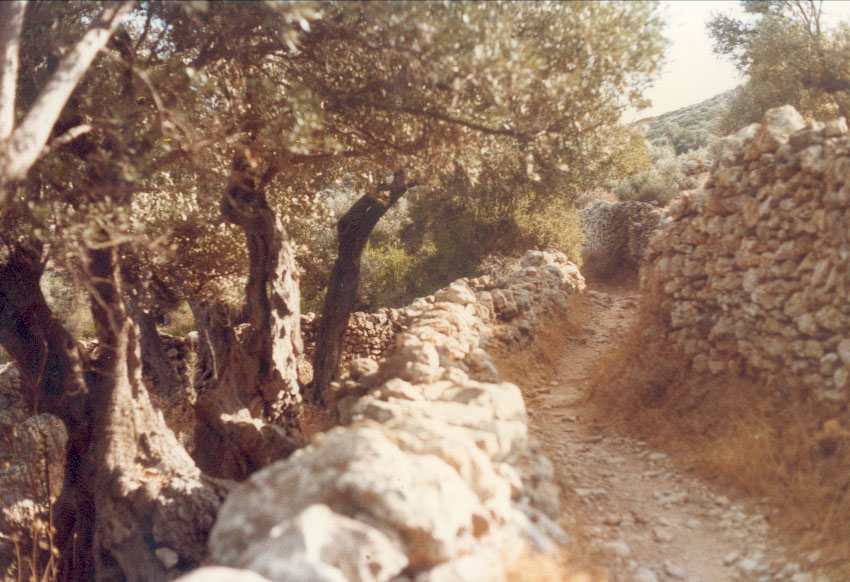
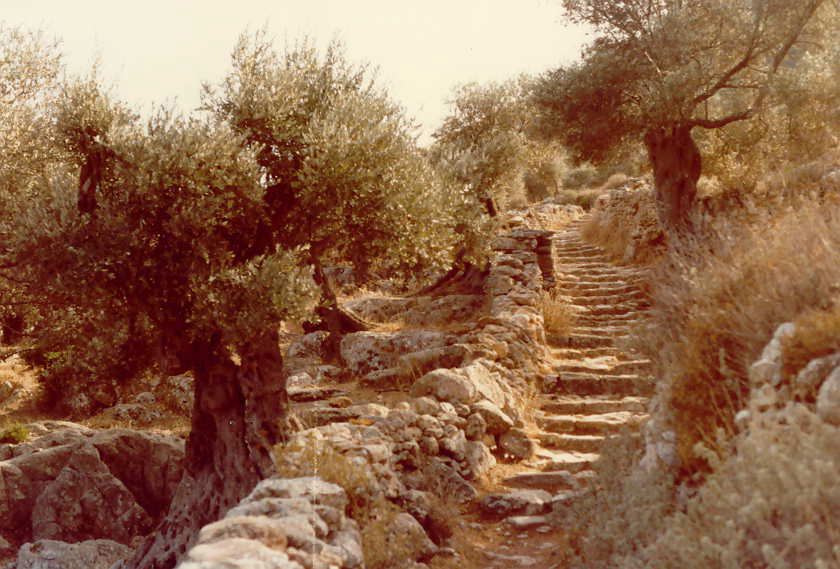
Once out of Katavati and past Moni Firoughia you head southwest, inland and upwards, away from settlements but still within olive country.
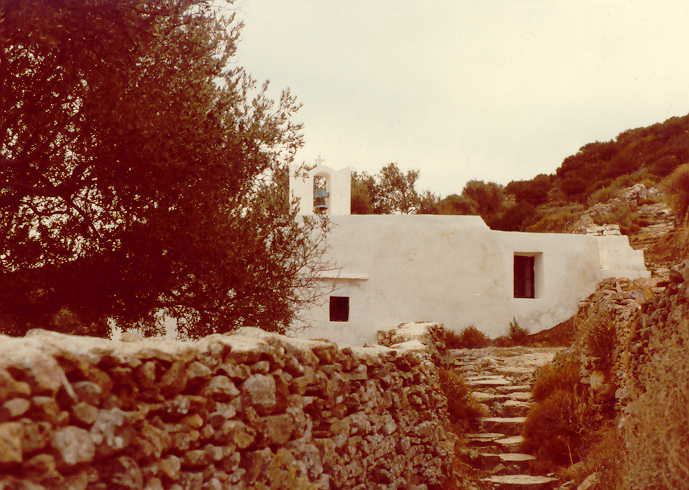
The olive groves fall behind and the worn stone steps dip and rise, winding up the hillsides and around lone outposts like this one-man monastery.

By the path, one of the island’s many ancient round towers.

Suddenly the eastern vista opens. Only now, looking out over the terraced spurs, the village of Plati Yalos with its long sand beach and the sea with hazy Andiparos on the horizon, do you realise how high you've climbed.
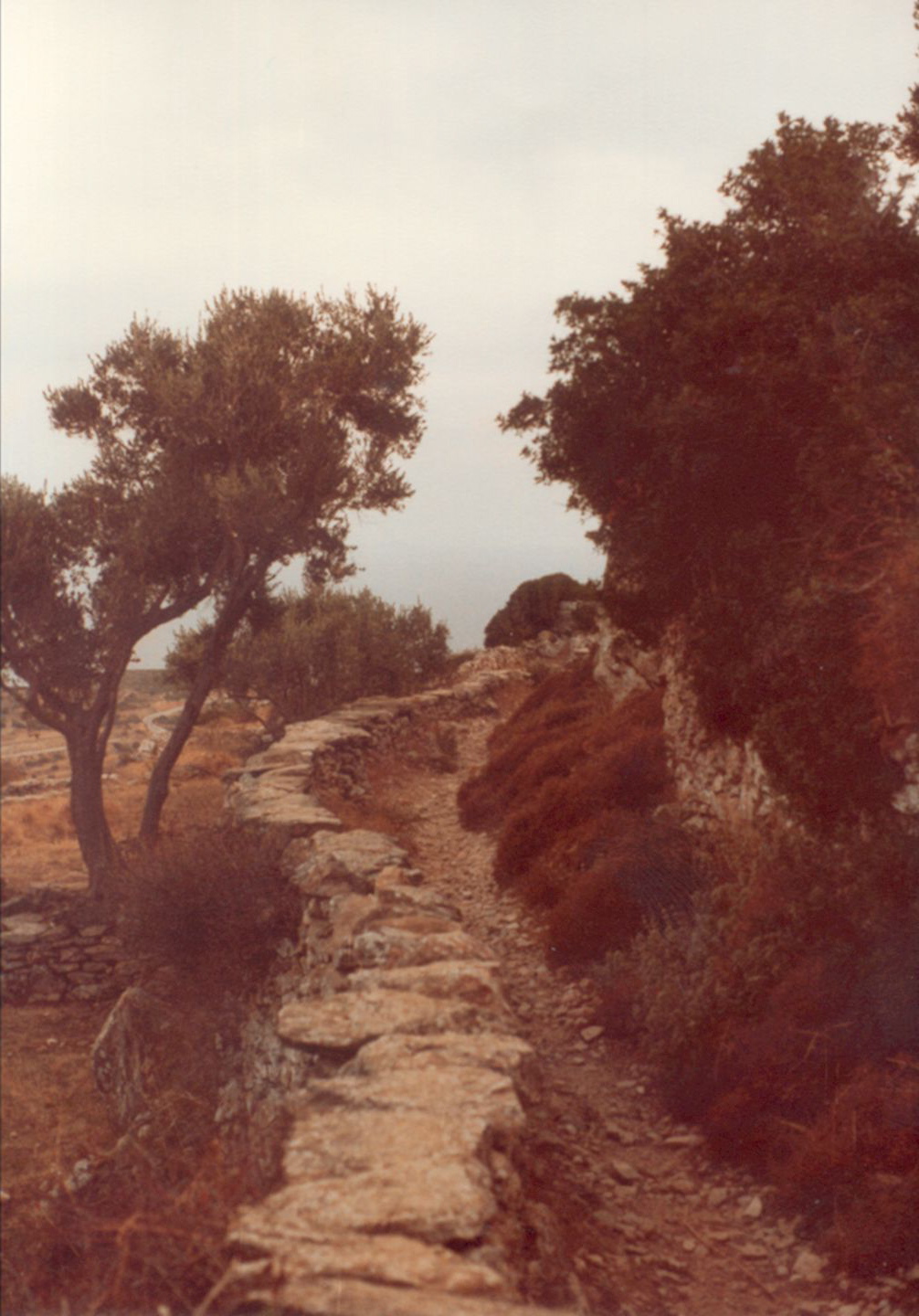

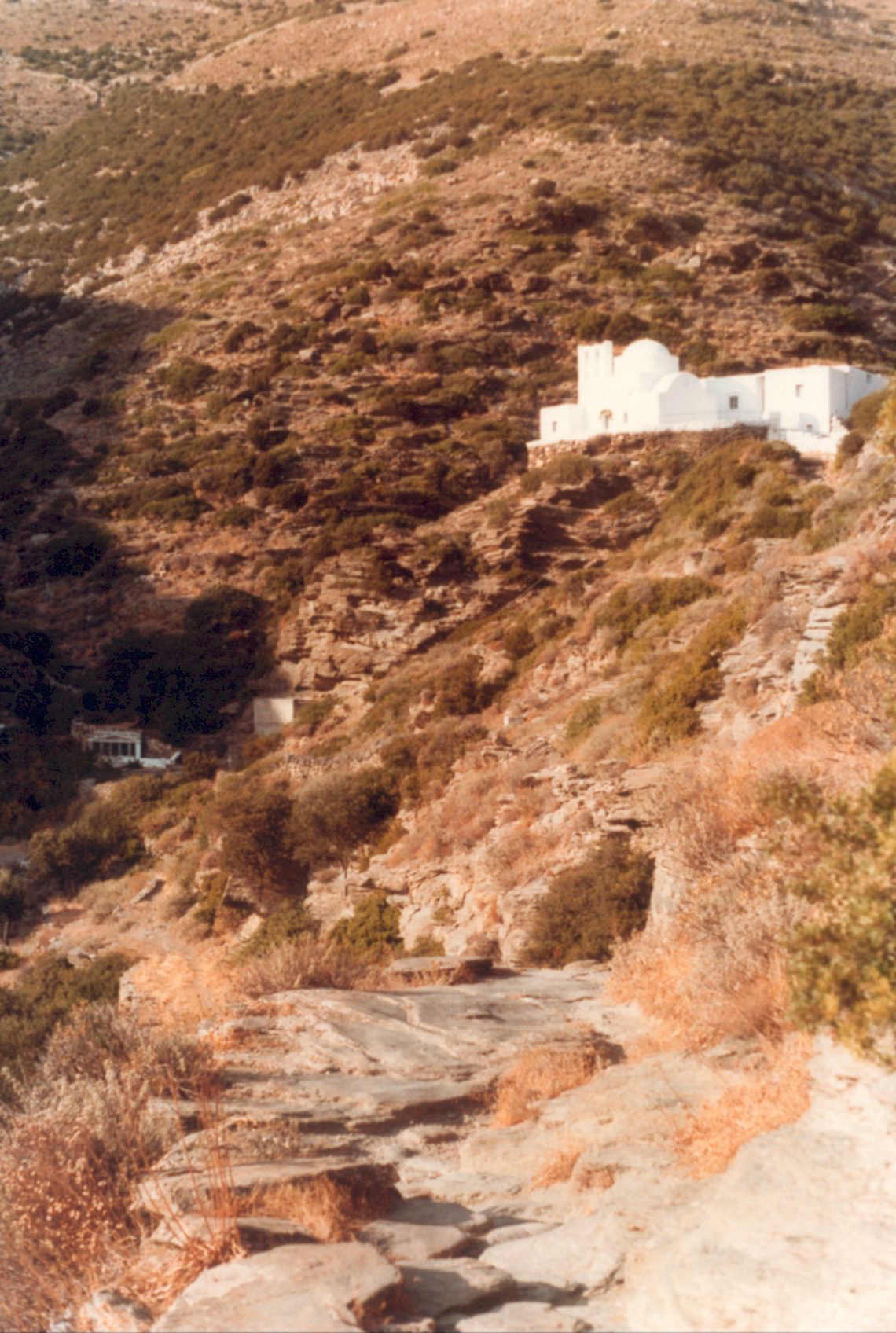
Then it’s back inland, along the flanks of the spurs on a rougher, gradually blurring path towards the west coast. Mysteriously parked mules suggest unseen human company. By the time the grand monastery of Taxiarchis looms around the bend the path has faded into the natural rock and the spring-fed troughs (lower left), though meant for four-footed travellers, quicken your step.
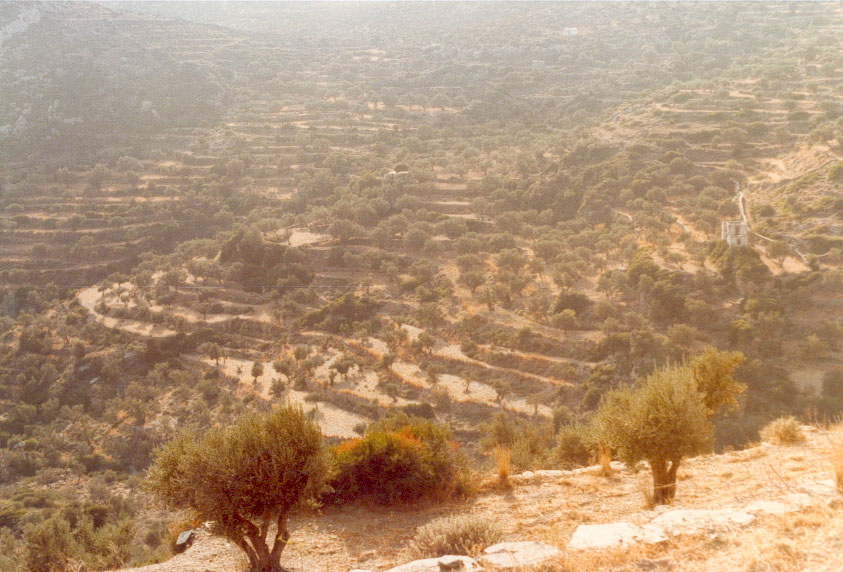
A peaceful ruin watches over the terraced valley and the sea beyond.
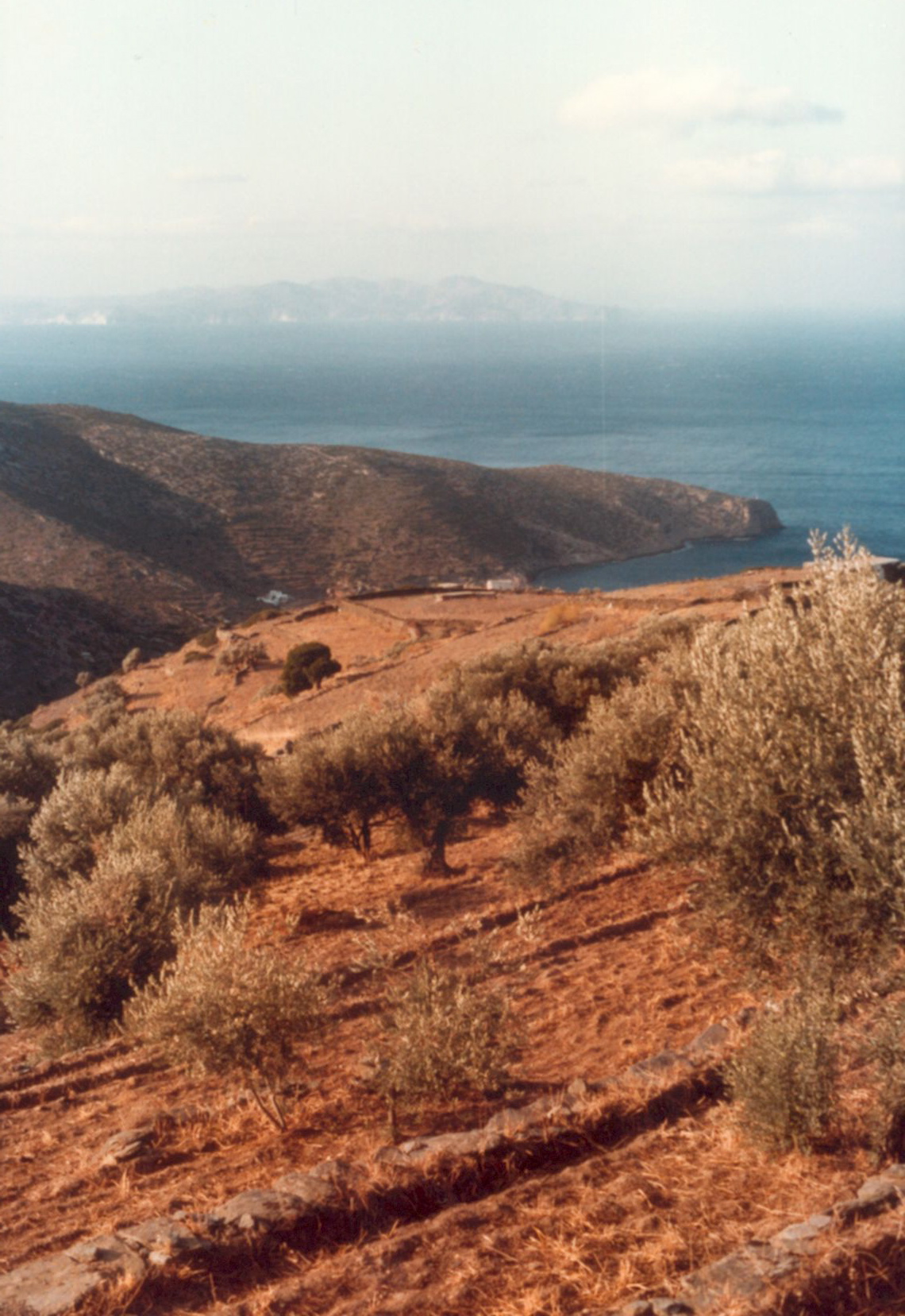
Finally, a crest announces Vathi Bay...

...and the village itself far below.
A few photographs, a thousand photographs, could never have captured the reality, and the reality is gone. Most of the walk has been replaced by a road that scars the hills and introduces noise, construction and tourists to the once-pristine interior.
Perhaps one must also admit that it brings new life and prosperity. Sifnos was an economic backwater as recently as the 1980s; today it's thriving. Ordinary Sifniots want to make a living and bequeath security to their children. Tourists like new roads to new places with new hotels. But is this a fair trade? The old culture and the aesthetic pilgrims say no, but in these globalist days who listens?
The end result is that this sliver of beauty, this rich set of aesthetic experiences and all its subtle and stirring effects, has been erased. For the moment other beautiful walks remain. You just have to find them.